Beef Goulash
Beef goulash is a hearty and flavorful dish with origins in Hungary, where it is known as “gulyás.” Traditionally, it was a simple soup or stew prepared by Hungarian shepherds, but over time, it evolved into a beloved staple in Central European cuisine.
The base of a classic beef goulash consists of chunks of tender beef, usually from cuts like chuck or shank, which are ideal for slow cooking. The beef is typically browned to develop a deep, savory flavor before being simmered in a rich, paprika-spiced broth.
Hungarian paprika is a key ingredient in goulash, providing not only a vibrant red color but also a unique sweetness and mild heat. Both sweet and hot varieties of paprika may be used to adjust the dish’s spice level.
Onions are another essential component, often used in generous amounts, as they melt down during cooking to thicken the sauce. Garlic, caraway seeds, and bay leaves are common additional seasonings, contributing to the goulash’s complex flavor profile. Some recipes also include tomatoes or tomato paste, adding acidity and depth to the broth.
Vegetables like bell peppers and potatoes are often included, making the dish more substantial. Carrots and celery can also be added for extra texture and sweetness. The stew is typically slow-cooked until the beef is meltingly tender and the flavors are well blended, creating a comforting and satisfying meal.
Goulash is traditionally served with a variety of accompaniments. In Hungary, it might be paired with csipetke, small hand-rolled pinched noodles, or served over egg noodles, dumplings, or rice. A dollop of sour cream on top adds a creamy contrast to the rich, spicy stew.
Beef goulash’s popularity has spread beyond Hungary, becoming a cherished dish in countries like Austria, Germany, and the Czech Republic, each with its regional variations. Whether enjoyed as a soup or a stew, beef goulash remains a testament to the enduring appeal of simple, well-seasoned comfort food.
First, the story of goulash.
The history of goulash traces back to medieval Hungary, where it originated as a humble dish prepared by Hungarian shepherds, known as “gulyás.” The term “gulyás” itself means herdsman or cowboy, reflecting its pastoral roots.
Originally, it was a simple meal made from meat and onions, cooked slowly in a cauldron over an open fire. This dish was practical for shepherds who spent long periods away from home, as it was easy to prepare and provided substantial nourishment.
The earliest versions of goulash did not include paprika, as the spice was not introduced to Hungary until the 16th century. When paprika became widely available in the 18th century, it quickly became an integral ingredient in Hungarian cuisine, transforming goulash into the distinctive red stew known today. The inclusion of paprika not only added a vibrant color but also enhanced the flavor profile, making the dish more flavorful and aromatic.
Goulash gained prominence beyond Hungary in the 19th century. During this period, the Austro-Hungarian Empire facilitated cultural exchanges, and Hungarian dishes, including goulash, spread throughout Central Europe. Each region adapted the dish to local tastes and available ingredients, resulting in numerous variations. For instance, in Austria, goulash often includes caraway seeds and is served with dumplings, while in Germany, it might be made with a thicker sauce and different spices.
In the 20th century, goulash continued to evolve, influenced by changing social and economic conditions. It became a popular family meal, appreciated for its versatility and ability to feed many people with relatively inexpensive ingredients. The dish also found a place in international cuisine, celebrated in various countries for its rich, comforting flavors.
Today, goulash remains a symbol of Hungarian culinary tradition and cultural heritage. It is enjoyed in many forms, from a simple soup to a hearty stew, each version reflecting the diverse history and regional influences that have shaped this beloved dish.
Paprika
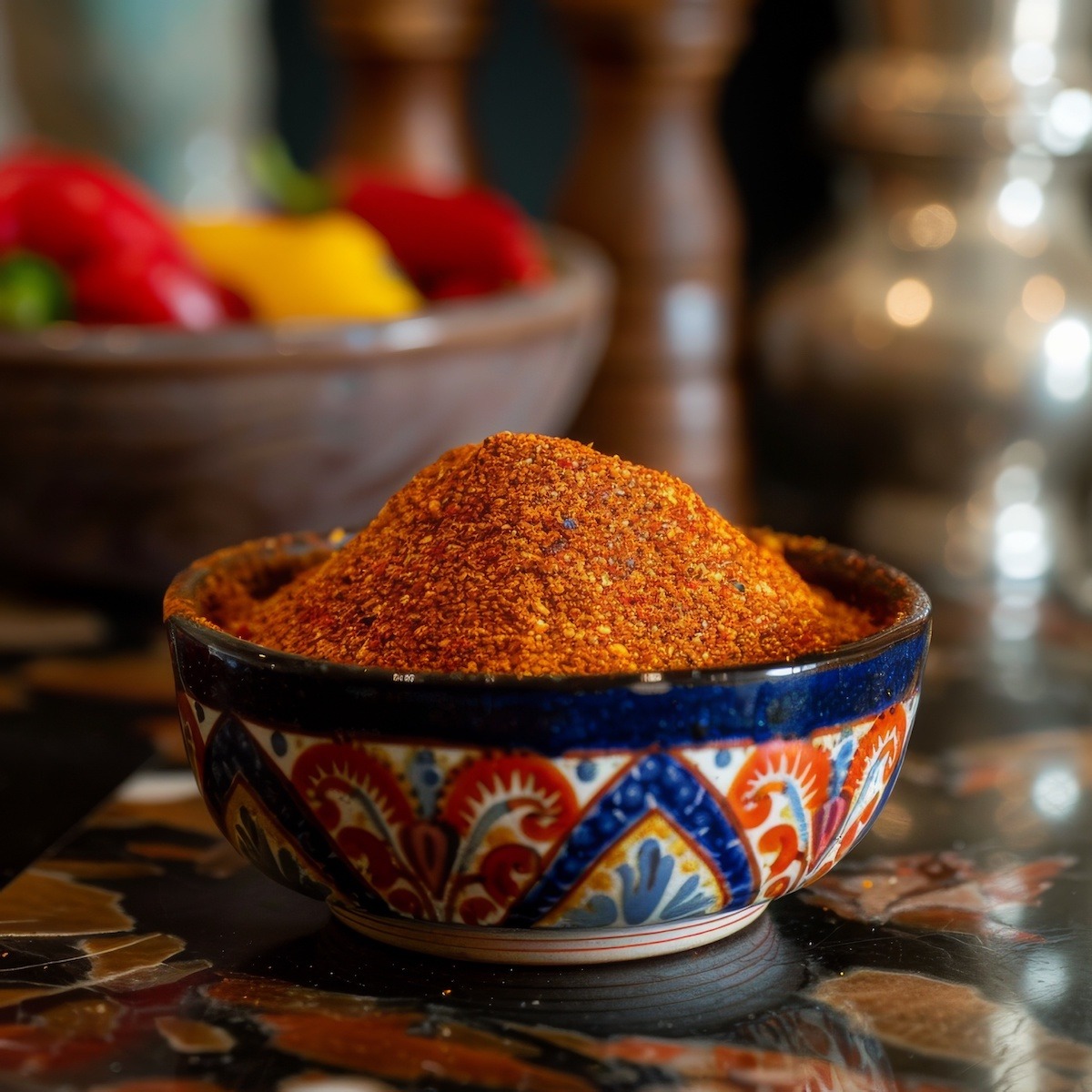
Paprika is essential to goulash, a traditional Hungarian dish, for its unique flavor, color, and cultural significance. Introduced to Hungary in the 16th century, paprika became a staple by the 18th century, transforming goulash from a simple meat-and-onion stew into a vibrant, flavorful meal. Hungarian paprika, known for its rich, sweet, and mildly spicy profile, imparts a distinctive taste that defines authentic goulash.
The spice’s deep red color gives goulash its characteristic hue, making the dish visually appealing and enhancing its overall flavor. Paprika’s versatility allows cooks to balance sweetness and heat, creating a complex and satisfying dish. Additionally, the use of high-quality Hungarian paprika, particularly from regions like Szeged and Kalocsa, ensures the best flavor and aroma.
Thus, paprika is not just a seasoning but the soul of goulash, embodying the essence of Hungarian culinary tradition and elevating the dish to iconic status.
Beef Goulash Recipe
Ingredients
- 4 ounces lard or pork fat
- 3½ lbs chuck roast boneless, cut into 3 ounce pieces
- 2 large onions sliced into rings
- 3 cloves garlic crushed
- 2 tablespoons paprika mild Hungarian
- 1 smal bouquet garni
- 1 lb tomatoes peeled, de-seeded and cut into quarters
- 1 quart stock or water
- salt and pepper to taste
Instructions
- In a large stock pot, melt pork fat or lard over med-high heat.
- Add meat; turn heat to high and brown meat.
- Add onions; turn heat down to med-high and cook for 5 minutes.
- Add garlic, cook for 3 to 4 minutes.
- Add paprika cook for 3 to 4 minutes, stirring the whole time.
- Add the bouquet garni.
- Add the tomatoes cook for 5 minutes.
- Add stock or water, salt and pepper.
- Turn heat to high, when it starts to boil, lower heat to a simmer.
- Simmer for 2 hours.

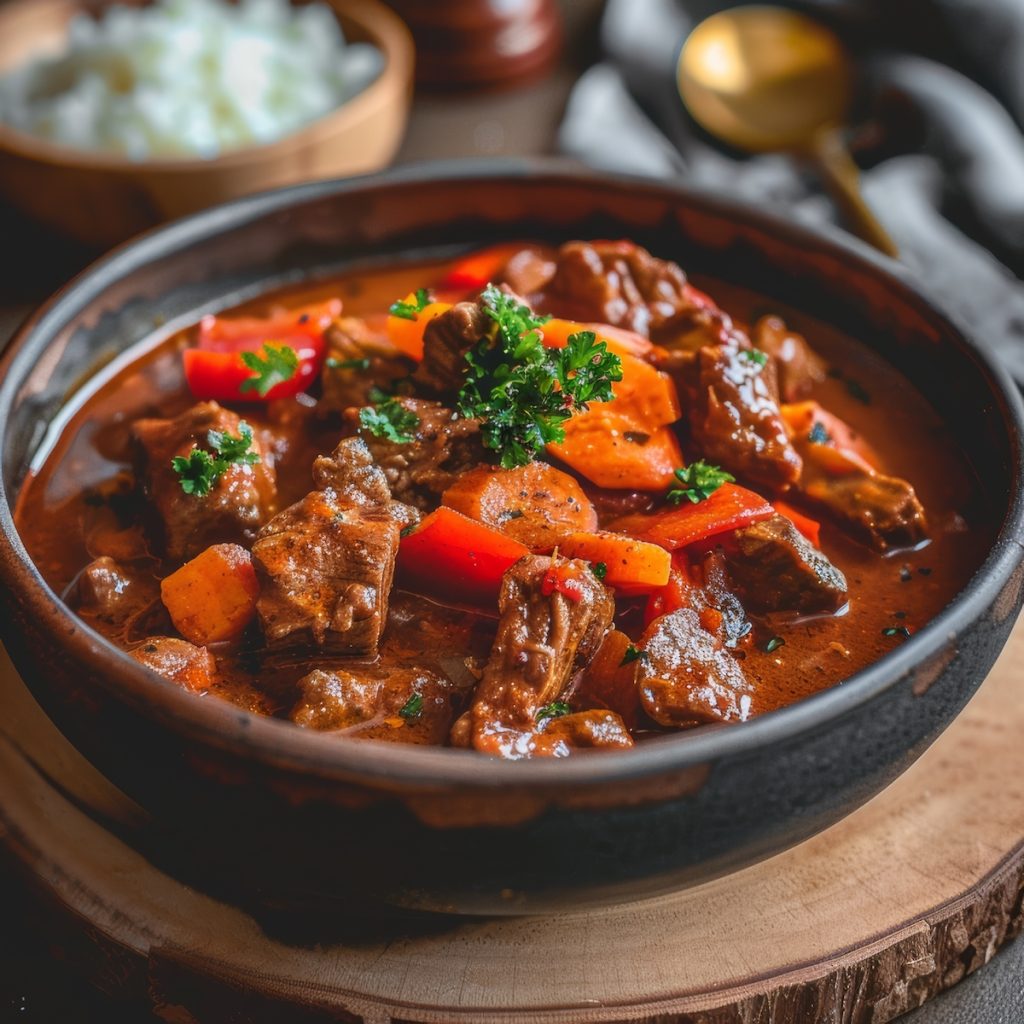
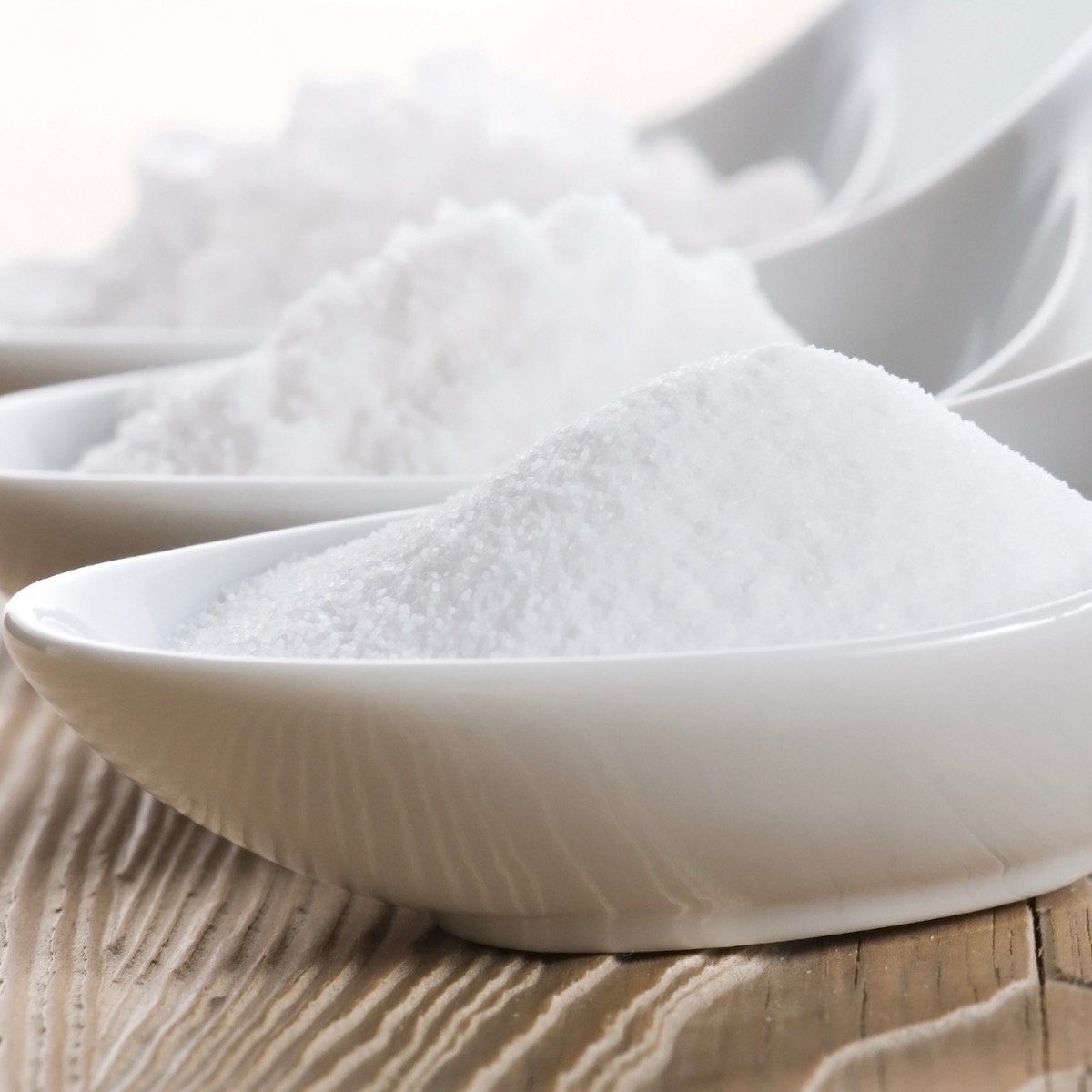
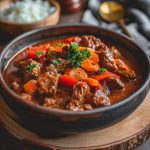
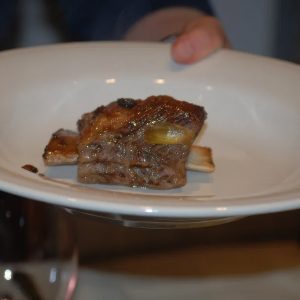
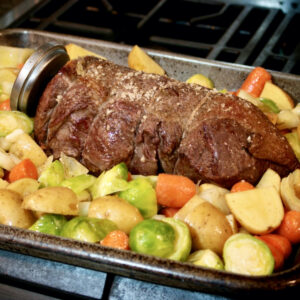
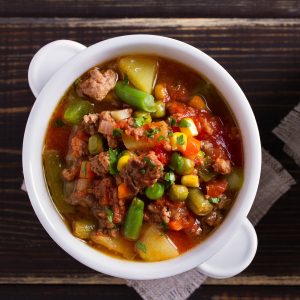
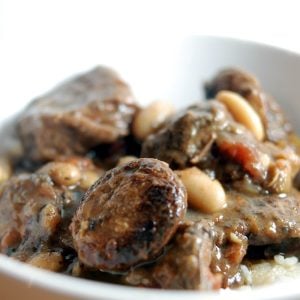
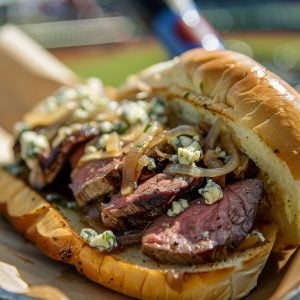
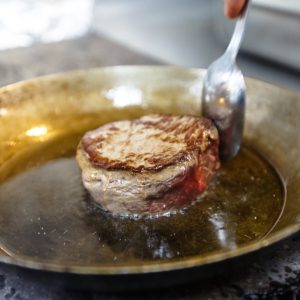
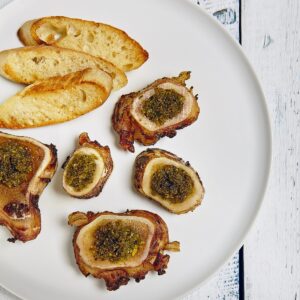
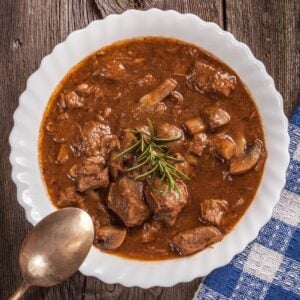


12 Responses
Thanks for the quick turnaround for beef goulash. I grew up in NC, and before I got to the q&a section had already thought Crisco (can’t make biscuits without that & buttermilk).
I have a fresh chuck in the refrig (hubby was going to grind for hamburger), but I will tackle this recipe tomorrow. I will get back to you with comments.
Thanks again for a great blog.
Jackie
I love your blog
Made this with slight modification (peanut oil, chicken broth, 1 Tsp half-sharp Hungarian paprika plus 1 and one-half Tsp of mild paprika. It was delicious served over spaetzele with a dollop of sour cream.
Hi,
Im a hungarian guy.
Your recipe is correct.
Actually we use oil and not pork fat because the cholesterol.
Csaba
Thank you I really enjoyed that. I especially liked reading about the history of Goulash; very interesting facts thank you for sharing. The recipe sounds absolutely delicious as well.
When I was growing up the one meal I hated more than split pea soup was “goulash.” But what you have here actually looks GOOD. Thanks.
Wow – I just published a Hungarian Cookbook filled with the stories of Gulyas – soup and stew – and all the rest of the arguments – paprikas chicken – and porkolt. It was quite something, but the subtle differences are what make Hungarian cooking so unbelievable delicious.
CLara
I have a slovak variation to your recipe, all the ingredients are the same as in your recipe, but for spices you also add: 1,5 tablespoon of ground cumin, a handful of marjoram ( dried ), and some chilli powder to taste. you can also add fresh green pepper. it is also common in eastern europe to add potatoes to goulash. there is this opinion that it is a crime to thicken goulash with flour, you can try to add finely grated potatoe half an hour before finishing cooking. I know that this is not the traditional recipe, but surely an interesting variation, i cooked it at many goulash cook offs, and everybody liked it 🙂 hope you will try it sometime 🙂 great blog by the way 🙂
Thanks Mirka.
Is there a good way of converting this recipe for a crockpot?
Todd, let me take a look. – RG
I tried this recipe @ work in south Africa and our customers really enjoyed it
My dad is Hungarian and he makes goulash, porkult, paprikash, etc all the time. Instead of lard, he uses bacon and some sausage (Hungarian sausage if he can get it, otherwise Polish or German, sliced up). Together these have enough fat, and they also add great flavor to the dish.